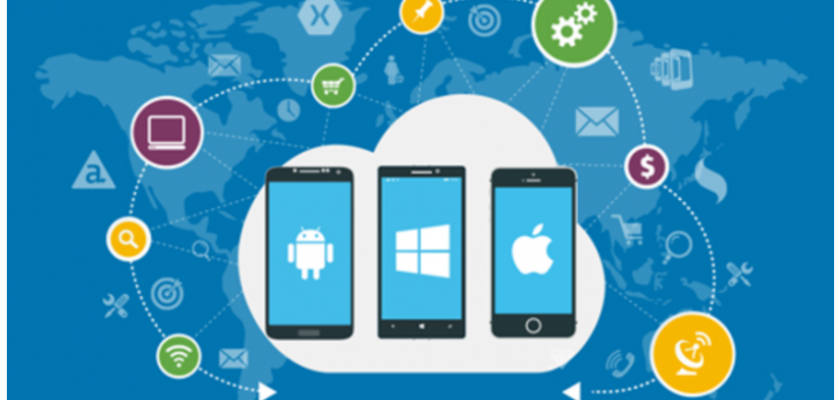Businesses need to keep targeting more and more customers to generate great revenue. Nowadays, getting an app developed is a trending way to do that. Mobile application development for a business’ selling/buying processes or enterprise operations isn’t much complex these days. You simply hire a developer, explain your idea, detail your requirements and your app is ready. But, if you lack even at a single place; from conceiving an idea to implementation of the end-product, the cost of development will become pretty much high. If the development of your app doesn’t match with the standard development process, the cost will cross the set budget limits. And it will happen whether you outsource your project or get it done by the own in-house development team.
So what is the way to control the costs of an app development?
First of all, no app development cost will match with another one because every project is different; it always varies from previous or the next ones. Cost is decided by the number of features, workflow, type of app, platform, etc. Does that mean you should focus more on reducing features to decrease the cost? No, it doesn’t. You must not compromise with quality or user experience of an app because doing so will also decrease some cost.
This post is an effort to bring all those things, tips or tricks together which can reduce the cost of your mobile app development project, without compromising even at single place. Let’s learn about them.

1.Well-documented requirements analysis
A reason adding to the increase in the cost of development is having no or imperfect plan. The ideal approach is you first plan all your requirements and detail them all perfectly with utmost attention. Then you will need revisiting all your requirements/plan a few times before you finally allow a team to begin the development. When things are well-documented, there will be need of making fewer changes throughout the progress of the project. In result, there would be few occasions when developers will add to the cost.
2. Making a choice between in-house app development or outsourcing
Deciding on getting the app-project developed from one between the in-house team and outsourcing it to a third-party firm is really difficult. You should not simply pre-assume which would be better for you. First, learn about hiring the benefits of them both and then proceed.
In-house app development proves to be right choice when –
you already have good developers at your disposal;
you do not want to disclose the secrecy of your idea before its launch and/or
you are not clear about your needs and expect several changes and/or
you are not completely clear about the requirements and expect to make a lot of changes during the development.
Outsourcing the project to third-party developer is right choice when –
you do not own in-house team of developers, or have little knowledge or less capability to handle the project on your own.
you want to save your office-space and time of your resources for other vital activities and/or
you have thoroughly documented your requirements.
3. Deciding on the most essential features
When developing an app, your objective is most likely to generate revenue; however, there is always some uncertainty regarding this. Companies offering mobile app services suggest app-owners get as many features as possible added to an app. Now, every additional feature in your mobile app will increase the time and efforts required in the development and so will increase the cost.
Most of the apps are created to generate revenue, directly or indirectly. This is a must-have feature for any app to keep surviving.
Direct revenue means an app itself is a product and the developer / app-owner behind it wants to generate revenue by selling it. Indirect means the app will sell products/services and act as a medium connecting a seller with customers.
But there are other features too and often time they aren’t the core features of an application. Don’t be uncertain that which features you want to keep and which ones have to be removed. Often time developers would suggest you get an app built with all features but this will add to the cost. Developing an app with core features and leaving others to be added in future-updates will keep the cost down. This is one simple way to reduce the cost of development.

4. Timely communication with the development team
Now whether a single team is taking care of your project for both iPhone and Android app developments or two but make sure you always stay in touch with it/them by the best of the communication mediums. There are several stages of the development of the single app and things can go wrong or off-track anywhere. You have to keep tabs on everything happening in your project to avoid additional costs which you may have to pay to make wrongly done things right.
5. Balancing experience within the development team
Apart from keeping track of the total number of hours spent, you also need to know how many developers are working on your project. This will help you reduce the cost. For instance, if you are getting your iOS app developed from in-house development team which is consist of three experienced developers then cost will increase.

All works involve some simple tasks which can always be done by juniors but if you have assigned these tasks to experienced or senior developers, doing so will certainly add to the cost. Similarly, if you are outsourcing your app project to a third-party developer, you still need to have all the information on how all resources will be used. If you feel that they have assigned the development of a critical solution to less experienced developers in order to save cost on their part, you can always ask them to assign your task to the developers having relevant experience.
By balancing between experienced and junior developers, you can control the cost of your project.
Apply these tips to your project development and see how economically you get it done.
